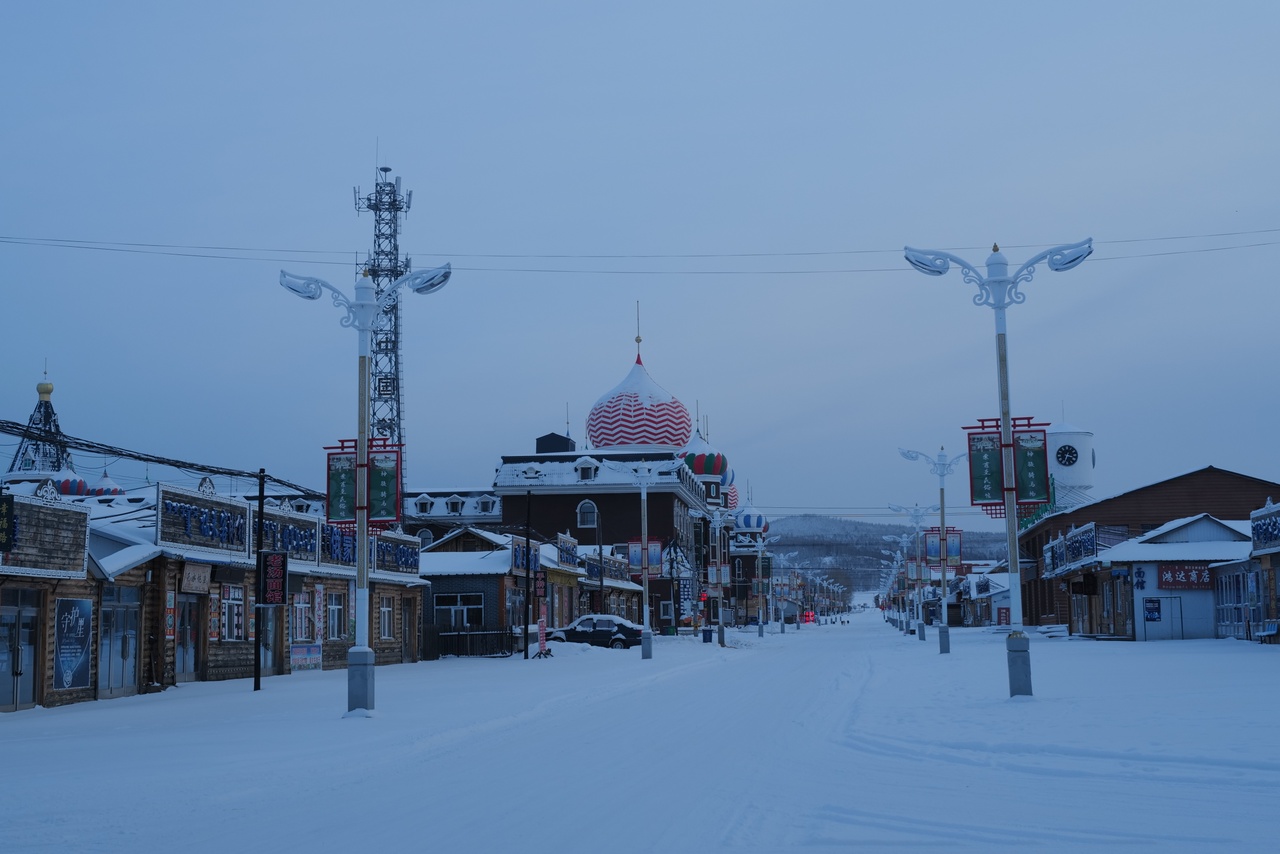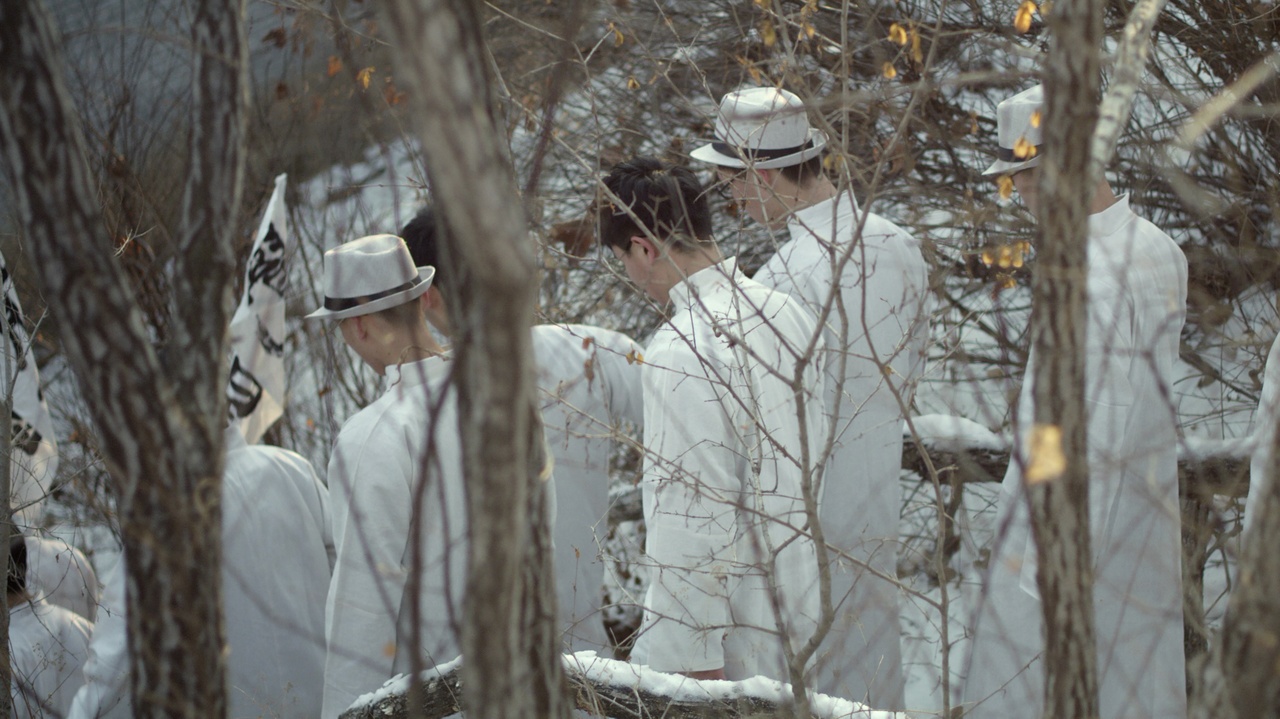SUSPENDED Yuan Fuca on Winter Exhibitions and Bits of Breathing Space in Beijing

“Qiu Shihua: Sanctuary,” Galerie Urs Meile, Beijing, 2023-24, installation view
Winter in Beijing isn’t about hibernating; it’s about an acute awareness – a stark contrast to the art-week gloss of market favorites and VIP glamour that enveloped Shanghai in November. People here are like water, fluidly moving away from that sheen in search of something more substantial. The art scene here, a rich tapestry stretching longitudinally, is where the old and the new merge, forming a vibrant landscape alive with the voices of artists and a provocative aesthetic. The dinner-table conversations, casual get-togethers, and artist-led cooking sessions in Beijing counterweight the looming shadows of AI-driven technocracy, increasingly aggravated censorship, and institutional fatigue.
At the heart of all this is the 798 art district, pulsing with the city’s emotional currents. Notably, Qiu Shihua’s “Sanctuary” at Galerie Urs Meile, a striking and pivotal exhibition, captures the essence of the artist’s remarkable journey from China’s southwest. Against a backdrop where Western art methods were still taking root, Qiu found his own artistic language without the aid of formal training. His initial foray into art, creating theater posters, ended abruptly due to societal upheaval, leading him to a secluded life where art became a refuge. At 40, an embrace of Taoism marked a profound shift in his art, turning pain into joy. The 1980s broadened Qiu’s artistic landscape, bringing international recognition, especially after his belated encounter with Impressionism in Paris, which encouraged him to explore inner landscapes. Confronting severe illness in the 2010s, Qiu found solace and healing in meditation and painting. This phase resulted in a remarkable resurgence of his work. The “Sanctuary” exhibition displays art as a narrative of resilience, a blend of personal adversity and philosophical depth.
On the other side of the 798, across from UCCA Center for Contemporary Art, is Long March Space and its expansive exhibition “From Paper to Paper,” curated by Hangzhou-based researcher Liu Tian and featuring works by Inga Svala Thorsdottir and Wu Shanzhuan that unfold like a cosmos of inventive and interrelated concepts captured on A4 sheets. Encompassing 600 sketches from over 30 years, this compilation challenges the traditional definition of an exhibition. It’s a dialogue in paper and ink, confronting questions around identity, gender, and globalization. These pieces echo the past and form a self-sustaining ecosystem of creativity, where each work feeds into and inspires the next. Through this index of inquiries, the artists suggest how one can work with certainty and commitment when faced with all the visible and invisible chains that bind us.
Meanwhile, the fall season of the Long March Independent Project, inaugurated in 2021 by Long March Space, unveils “Stop! Surfaced and Zone Out.” This exhibit showcases performance installations by three emerging artists, each crafting a unique state of suspension. Tan Yingjie’s theatrical work Don’t Let Things Come to You is a dynamic fusion of live performance and art installation. Inspired by a personal event in the artist’s life – the theft of a mobile phone – this production renders the incident into a riveting narrative with six interconnected characters. In the Wilderness, a three-act performance by Beio, delves into the contemporary disconnect between body and spirit, drawing inspiration from Osamu Dazai’s writings and the Sumerian myth of Inanna’s descent into the underworld. Mollyrainmore.org’s ME FOR YOU AND FUN FOR ME is an intimate experience designed to provoke feelings of claustrophobia and introspection. Its effect is enhanced through guided meditation. Complementing this, three films voiced by AI are showcased in the waiting area outside, skillfully blending satire and inquiry with disorienting audiovisuals.

Liu Yujia, Shiwei Port at the Chinese-Russian border
Within the quietude of suspended method, Magician Space unveils its latest group show, “Reminder: Version Update Available,” which touches upon the idea of updatism and asks us to ponder deeply: Is the morphing silhouette of Shanghai merely mirroring the global currents, or is it, perhaps, a more introspective act, a soulful testament to self-preservation amid the relentless tide of change? Works from Chen Wei, Ho Rui An, Li Tao, Wan Chaoqian, Xie Qi, Trevor Yeung, Yu Bogong, Hugo Servanin, and Zhuang Hui probe the dichotomy between life’s natural cadence and the relentless march of globalization. Here, the artists, subtly critiquing a Western-centric worldview, challenge the narrative of globalization not as a facilitator of life but as an entity seeking its own perpetuation. The show compellingly juxtaposes the inherent rhythms of life against the imposed pace of global updates, highlighting a fundamental contradiction in our contemporary existence.
In the Tianzhu Free Trade Zone, located in the Shunyi District, a 20-minute drive away from the 798’s industrial hum, He Xiangyu’s exhibition at White Space Gallery signifies a reflective homecoming. His sculptures, which have evolved from addressing the Asian diaspora’s experience, now delve into what the artist calls “identity archaeology.” He employs this shift from the immediate to a near-futuristic perspective to explore the endurance of Eastern philosophies. The series on view, a thoughtful interrogation of the past shaping the present and future, invites a reexamination of the artist’s cultural trajectory. In constructing a nuanced dialogue across time, He offers insights into the continuous evolution of identity and culture in an increasingly complex world.
Back in the CBD region, DRC No.12 emerges as a significant nonprofit space, having survived the extensive urban regulations that led to the closure of several others, including Arrow Factory, Institute for Provocation, and Salt Projects, before the pandemic. Here, Zhuang Hui’s solo exhibition “The Journey of an Autodidact” traversed the last sexagenary cycle, weaving personal collections with monumental societal shifts. Meanwhile, DRC No.12’s collaboration with the international arts organization Kadist introduces “Track II,” a yearly screening program harnessing moving images to explore geopolitical issues through non-official narratives. DRC No.12 has also initiated an artist-in-residence program in the Changbai Mountains, which fosters critical inquiry into the history and geopolitics of China’s northeast.

Wang Tuo, “Tungus” (from the series “The Northeast Tetralogy”), 2021, video still
In addition, Assembly, a fresh entrant in the nonprofit landscape, conceived by curator Iris Long and scholar Wang Hongzhe, orchestrates gatherings for intellectual exchange. In this milieu, the project Under the Cloud, initiated by Iris Long and artist He Zike in 2021, embarks on an exploratory journey into the narratives surrounding science and technology infrastructures in southwest China, starting in Guizhou – a place marked by its hilly landscape – past, present, and future intermingle and conflate. Guizhou province has one of China’s most significant populations of ethnic minorities and is a front-runner in China’s big data industry. The initiative exemplifies a research curiosity that has emerged in the younger generation of thinkers and practitioners, looking closely at China’s complex reality of geopolitical changes and accelerated technological advancements.
While technology aims to create seamless global networks, life inherently seeks moments of pause and self-adjustment, indicating a natural process of regeneration that contrasts with the constant updates imposed by the tech industry. A few days after New Year’s Day in 2024, I had a catch-up call with the artist Liu Yujia. In previous years during the winter season, she used to visit Dongbei (Northeast China), where I grew up, to escape the art world’s forced pace and find life’s natural rhythms in small border towns, pine forests, and snowy mountains. During her recent trip to the Xingan Mountains, she continued her research and film production by exploring elements such as the frigid environments, the ginseng industry, and the stories of the hunters and Mongolian shamans.
The stark, evocative landscapes of Dongbei are the setting of Wang Tuo’s video series The Northeast Tetralogy (2018–2021), which intricately weaves together archival material, modern history, myth, and literature, crafting an epic that delves deep into the annals of modern Chinese history. Wang’s profound exploration methodically unravels the collective unconsciousness and historical trauma embedded within the Chinese psyche. Employing a shamanic approach to editing, Wang breathes new life into archival materials, transforming them into vivid canvases where the layered narratives of the nation’s past and present are dynamically reenacted and reinterpreted. The artist also offers us a form of healing – through a collective, almost meditative journey into the undercurrents of shared subconscious – that aims to silently overcome the transgenerational trauma that is shaping our existence in totalitarian times.
Yuan Fuca is a writer and curator based in Beijing and Boston. She is currently the associate program director for China at Kadist, a 2023 fellow at the Asian Cultural Council, and the inaugural curatorial fellow at the De Ying Foundation. Previously, she served as the founding artistic director of Macalline Center of Art in Beijing. In 2016, she cofounded Salt Projects, Beijing, a nonprofit art space that offered a site for action and exchange among young artists and practitioners. Yuan Fuca is also a cofounding editor of Heichi Magazine, a bilingual online publication dedicated to art criticism. Her writing has been published on platforms such as Artforum, ARTnews, BOMB, Flash Art, Frieze, New York Times T Magazine, and Yishu.
Image credit: 1. Courtesy of Qiu Shihua and Galerie Urs Meile; 2. Photo Liu Yujia; 3. Courtesy of Wang Tuo
